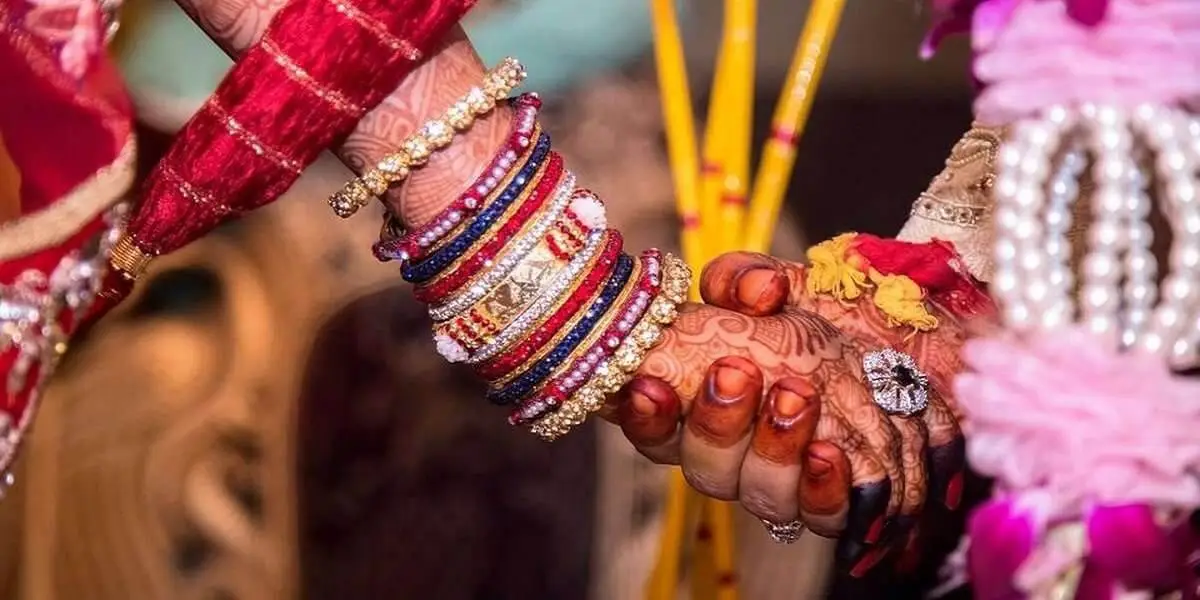Indian Mehndi Designs are traditional henna tattoos that are popular in South Asia, especially India. Usually applied to the hands and feet, they frequently feature intricate patterns and motifs with symbolic significance. Weddings, religious festivals, and other celebrations are typical occasions for applying mehndi designs.
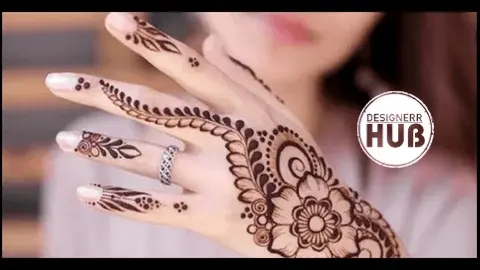
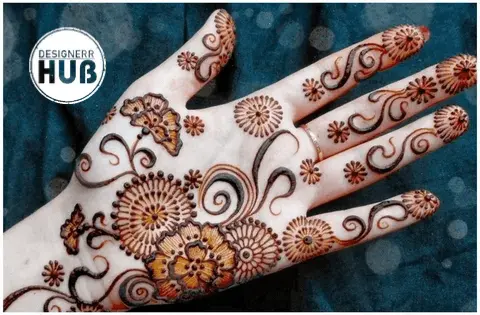
A mehndi artist, also known as a henna artist, applies them with a cone or a small paintbrush containing henna paste. The paste is allowed to dry on the skin for several hours before being removed, leaving behind a stain lasting several weeks.
What Is The Importance Of Mehndi In Indian Culture?
Mehndi holds great importance in Indian culture, particularly in Hindu and Muslim communities. Some of the key reasons why mehndi holds significance in Indian culture are:
- Tradition: Mehndi has been a part of Indian tradition for centuries and is considered a cultural symbol of the country.
- Festivals: Mehndi is often applied during special occasions and festivals, such as weddings, Karva Chauth, Diwali, Eid, and others. It is a way to add color and joy to the celebration.
- Symbol of joy and happiness: Applying mehndi is seen as a symbol of joy and happiness, and is often associated with celebrations and special events.
- Beauty: Mehndi is considered a form of body art and is used to enhance the beauty of the hands and feet. It is also used to create intricate and intricate designs, which are thought to be aesthetically pleasing.
- Good luck: Mehndi is believed to bring good luck and is often applied on special occasions, such as weddings, to ensure the couple’s happiness and well-being.
An Other Type Of Mehandi Design Of India You Like: Rajasthani Mehndi Design
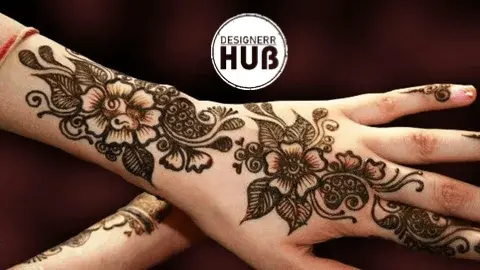

Indian Easy Mehdi D
Easy Indian Mehndi Designs are simple and basic henna patterns perfect for newbies or those who desire a more modest style. These designs often incorporate simple forms and patterns, such as dots, lines, and simple flowers, that are simple to copy and do not necessitate a great level of talent to make.
Traditional Indian henna patterns called “Indian Khafif Mehndi Designs” have a style that is delicate and complicated. In Arabic, the word “Khafif” means “light” or “delicate.” Most of the time, a very thin mehndi cone is used to make the thin lines and delicate patterns in these designs. They are often used to make intricate patterns on the hands, feet, and legs, and are thought to be the best choice for people who want something simple and elegant.
You can visit: Pakistani Mehndi Design
Also, modern brides love them because they look great with their Western wedding dresses. These designs are often based on Arabic and Persian mehndi designs and may include paisleys, flowers, leaves, and geometric shapes. A professional mehndi artist can put them on, and the paste needs to dry for a few hours before it can be taken off.

Arabic Indian Mehdi Designs:
These are a mix of traditional Arabic henna designs and Indian Mehndi designs. Most of the time, these designs have both strong and delicate lines, as well as heavy floral patterns. They are known for their symmetrical designs, big, bold patterns, and use of space.
Patterns like paisleys, flowers, leaves, and geometric shapes are often used in Arabic Indian mehndi. Most of the time, they are put on the hands, feet, and legs, but they can also be used as a full-hand design or for a wedding. Modern brides like them because they are a unique mix of traditional and modern styles and look good with both traditional and Western clothes.
Indian Mehndi Designs For Fingers are henna patterns that are put to the fingers specifically. These patterns frequently consist of straightforward, minimalistic elements like dots, lines, and straightforward flowers that are simple to imitate.
As a complement to larger and more complex mehndi designs on the hands and feet, they are also very popular. For special occasions like weddings, religious festivals, and other celebrations, people frequently employ these designs, which can be simple or intricate, to adorn their fingers.
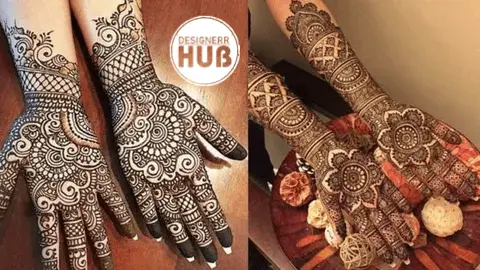
Indian Bridal Mehndi Design
Another type of design is rich, intricate henna designs customarily applied to the hands and feet of Indian brides on their wedding day. These patterns are frequently regarded as essential components of an Indian bride’s attractiveness and decoration on her wedding day.
Typically, they incorporate an assortment of traditional Indian designs and symbols that are seen as auspicious and have unique significance. Included in these designs are paisleys, flowers, leaves, complicated geometric forms, and the bride and groom’s names.
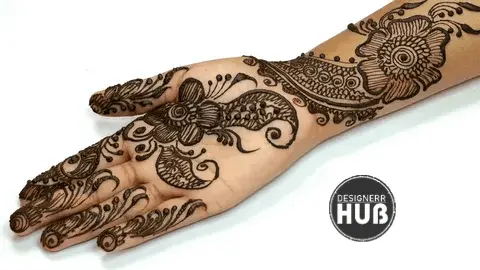
Indian Mehndi Designs Full Hand are henna patterns that often cover the entire hand, from the fingers to the wrist. These designs are frequently exceedingly complex and ornate, with a range of patterns and motifs unique to Indian culture.
Paisleys, flowers, foliage, and geometric forms are all common elements in these designs. These designs are popular for weddings, religious festivals, and other celebrations, and they are normally applied by a professional mehndi artist.
They are also known as Bridal Mehndi designs since they are usually done on the bride’s hand, and complete hand patterns are thought to be more traditional, exquisite, and eye-catching. Full-hand mehndi patterns can take several hours to complete and necessitate a high level of expertise and precision.
You can also visit Pinterest.
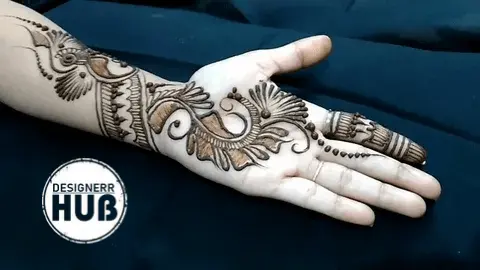

Front Hands Best Indian Mehdi Design:
Indian Mehndi Designs For Front Hands are henna designs applied on the front of the hand, often from the fingers to the wrist. Frequently resembling traditional Indian mehndi designs on the back of the hand, these patterns may include paisleys, flowers, leaves, and geometric forms.
They might range from simple and minimalist to elaborate and extremely detailed. These designs are often made by a professional mehndi artist using a cone or a small paintbrush to apply the henna paste for special occasions like weddings, religious festivals, and other celebrations.
The paste is allowed to dry on the skin for many hours before being removed, leaving behind a stain lasting several weeks. Front-hand mehndi designs are regarded as the most significant and noticeable component of the mehndi design, as they are immediately apparent to others and have a significant impact on the whole appearance.
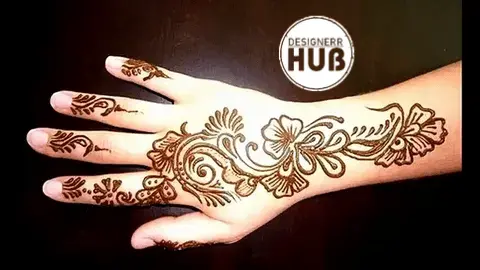
Traditional Indian Mehndi Designs
There is a combination of classic Arabic henna patterns with Indian Mehndi designs. These designs often combine bold and delicate lines and heavy floral patterns.
They are distinguished by symmetrical patterns, large and bold motifs, and the utilization of negative space. Paisleys, flowers, leaves, and geometric forms are common patterns in Arabic Indian mehndi designs. They are commonly used on hands, feet, and legs, but they are also utilized as complete hand and bridal designs.
Indian Mehndi Designs Back Hand refers to henna patterns that are commonly placed on the back of the hand, from the wrist to the base of the fingers. Typically resembling traditional Indian mehndi designs for the palm, these patterns may include paisleys, flowers, leaves, and geometric forms. .

Indian Mehndi Designs For Legs are henna patterns applied to the legs, most commonly the feet and ankles. These designs are similar to traditional Indian mehndi designs for the hands, and they frequently include paisleys, flowers, and geometric shapes.
They are frequently intricate and detailed and can take several hours to apply. Because they are mostly done on the bride’s legs, they are also known as bridal Mehndi designs. These designs are popular for weddings, religious festivals, and other special occasions.
A professional mehndi artist will typically apply the henna paste with a cone or a small paintbrush. The paste is applied for several hours before being removed, leaving a stain on the skin that will last for several weeks.

